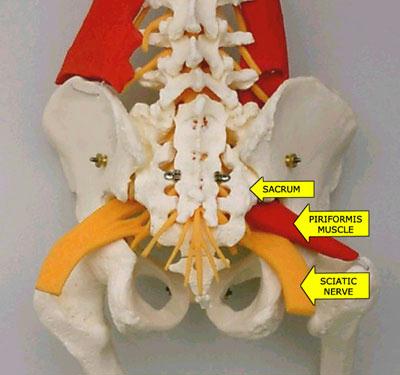SI Joint Pain And Piriformis Syndrome

While low back and buttock pain are common ailments among Greenville, Spartanburg and Anderson area residents, there is frequently an incomplete evaluation for two of the most common causes, the sacroiliac joint (aka the SI joint) and piriformis syndrome. This is in part due to both the complex anatomy in the area and the large number of structures that can cause low back and leg pain.
Even when these studies are negative, both sacroiliac pathology and piriformis syndrome can be exceptionally painful and unremitting. One helpful way to differentiate between these two conditions is to look for pain that is: · worse on one side of the buttock, · worsened by sitting, · associated with leg pain that is more difficult to describe than the easily-defined electrical nerve pain that occurs with a disk or sciatica.
Failure to respond to treatments directed toward the disk or nerve root is another helpful clue that these two structures might be involved. While physical exam is the mainstay for diagnosis, x-rays that look for abnormal positioning between the sacrum and iliac bones or Diagnostic Musculoskeletal Ultrasound directed toward muscle and ligamentous injury in the region can be helpful in proving the presence of both of these disorders.
The first step required in the treatment of either SI joint pain or piriformis syndrome is patient education. These conditions require a true shared decision-making model as it is up to the patient to practice proper stretching techniques, body mechanics and pelvic stabilization exercises during the recovery process. Other therapies that can help include: · medications by mouth for pain and inflammation. · physical modalities such as heat and therapeutic ultrasound to reduce muscle spasm. · orthotics to correct leg length discrepancies. · mobilization to improve biomechanics. · strengthening exercises. · injections into joints or ligaments to reduce swelling or stimulate regeneration, or around nerves to alleviate pain.
Surgical approaches for these maladies are often not successful and should only be considered as a last resort. Even when disk disease or nerve root irritation is present, treatment of sacroiliac pain and piriformis syndrome can be worthwhile as in over half the cases there is more than one source for low back, buttock, and associated leg pain.
The sacroiliac region includes the joint space between the tailbone and pelvic bones (referred to as the sacral and iliac bones) and the surrounding structures (including muscle, nerve and ligament). The piriformis is a muscle that arises from the lower, outside portion of the sacrum and inserts into the hip bone (the femur). Since the sciatic nerve dives through the piriformis muscle on its way out of the low back and into the leg, it can be involved with piriformis syndrome as well.
Unlike disk pain or nerve root irritation arising from the spine itself, both the sacroiliac joint and the piriformis are technically outside of the spinal column. This means that imaging studies such as MRI, and electrodiagnostics such as EMG, and nerve conduction studies will likely not be able to detect any problems.





